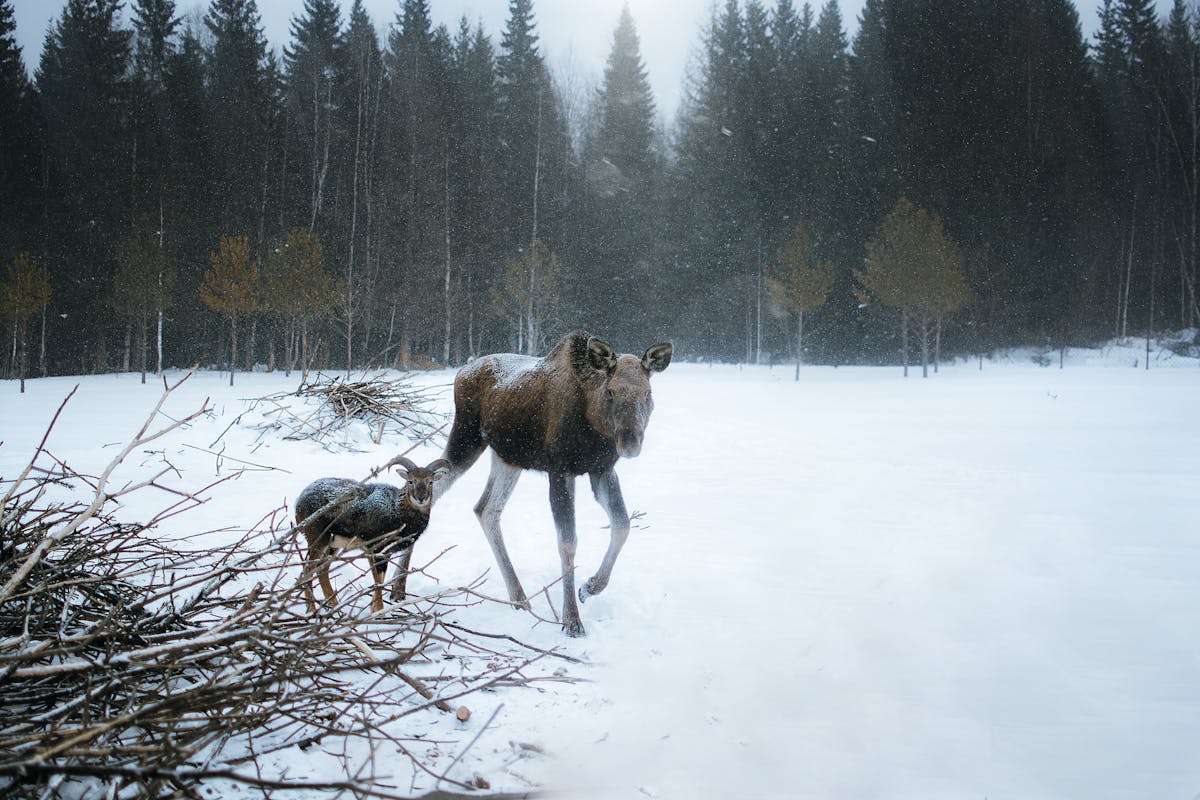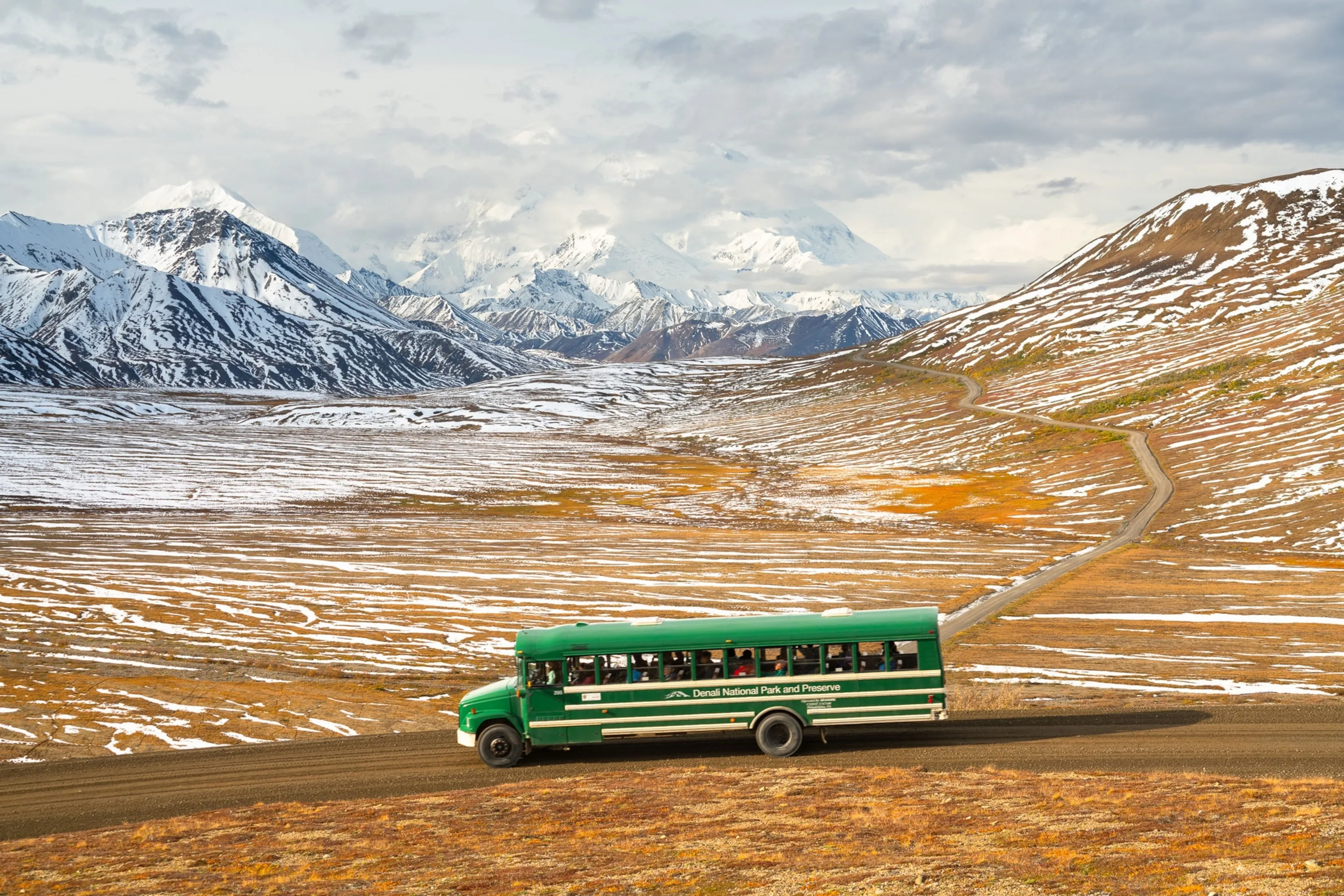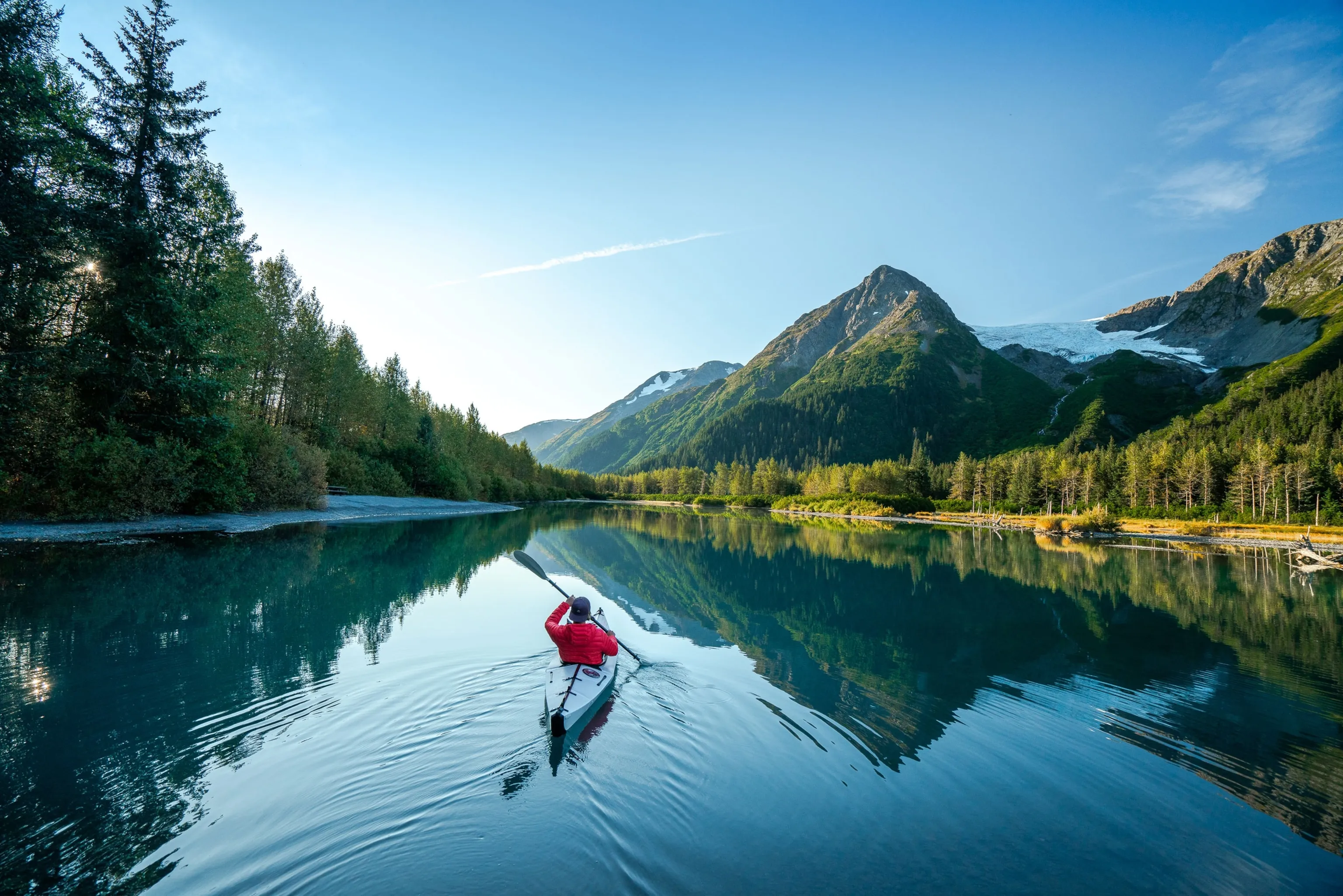Alaska, often called the Last Frontier, is a land of unparalleled natural beauty, vast wilderness, and rich cultural heritage. It’s a destination that promises adventure, breathtaking landscapes, and unique insights into history and traditions. From towering mountains and massive glaciers to vibrant cities and remote villages, exploring the Best Places In Alaska offers a journey filled with discovery and wonder. This guide dives into the must-see locations, experiences, and cultural highlights that make Alaska a truly extraordinary place to visit.
Alaska stands as the largest state in the United States, covering an immense 665,384 square miles. Its diverse geography includes rugged mountains, expansive forests, Arctic tundra, and thousands of miles of coastline. This vastness contributes to its reputation as a premier destination for outdoor enthusiasts and those seeking to connect with nature in its most pristine form.

Beyond its natural wonders, Alaska is home to a mosaic of cultures, particularly the diverse Alaska Native peoples whose history on this land spans thousands of years. Understanding their traditions, art, and resilience is integral to experiencing the true spirit of Alaska. The state’s unique blend of natural splendor and cultural depth makes the Best Places In Alaska more than just tourist spots; they are gateways to a profound travel experience.
Iconic Natural Wonders: Experiencing Alaska’s Grandeur
When you think of Alaska, majestic landscapes often come to mind. The state boasts some of the most stunning natural parks and wilderness areas on Earth, each offering unique experiences. These locations are undoubtedly among the Best Places In Alaska for witnessing the raw power and beauty of nature.
Denali National Park and Preserve is home to North America’s tallest peak, Denali Mountain. The park itself is a vast wilderness offering incredible wildlife viewing opportunities – grizzly bears, moose, caribou, and wolves are often spotted. Visitors typically explore via a transit bus system along the park road, designed to minimize environmental impact and maximize wildlife encounters. The sheer scale of Denali and its surrounding landscape is truly awe-inspiring.
Wrangell-St. Elias National Park and Preserve, the largest national park in the United States, offers landscapes of epic proportions. Here, towering mountains meet vast glaciers and wild rivers. It’s a place for true adventure, from challenging hikes and glacier traverses with guides to flightseeing tours that reveal the park’s immense scale. Exploring this park provides a profound sense of isolation and connection to the wild.
Further north, the Gates of the Arctic National Park and Preserve represents the epitome of remote wilderness. Accessible primarily by air or by hiking overland, it’s the least visited national park in the US. For those seeking solitude and an untouched Arctic landscape, this is one of the ultimate, albeit challenging, Best Places In Alaska to explore.
Vibrant Cities and Cultural Hubs: Alaska’s Urban Life
While wilderness defines much of Alaska, its cities and towns offer vital centers of culture, history, and connection. These urban areas, though smaller than metropolises elsewhere, provide unique Alaskan experiences and are integral to understanding the state’s modern life alongside its traditions.
Anchorage, located in Southcentral Alaska, is the state’s largest city and a major gateway for travelers. It boasts a dynamic food scene, a lively arts community, and extensive trail systems perfect for biking or walking, even in winter with fat tire bikes. Anchorage provides a blend of urban amenities and easy access to stunning natural surroundings, making it a key starting point for exploring the region.
Discover the Best Overnight Summer Camps in Texas
Your Ultimate Guide to Oktoberfest Los Angeles 2024
Discover the Best Things to See in Sarasota
Juneau, the state capital in Southeast Alaska, is unique because it’s not connected by road to the rest of North America. Accessible only by air or sea, its dramatic setting between mountains and the Gastineau Channel is breathtaking. Juneau offers a mix of governmental activity, Tlingit and Haida cultural influences, and access to nearby glaciers like Mendenhall. It’s a charming city with a strong sense of place.
Fairbanks, situated in the Interior, is known as the “Golden Heart City.” It’s a prime location for viewing the spectacular Northern Lights during the darker months. Fairbanks also serves as a hub for visiting Denali and accessing the Arctic region via the Dalton Highway. Its vibrant community spirit is evident in places like the local farmers market.
Southeast Alaska’s smaller towns like Ketchikan and Sitka offer rich historical and cultural experiences. Ketchikan is famous for its stunning collection of public art and its strong connection to the Tongass National Forest. Sitka boasts a fascinating Russian heritage, visible in its architecture and historical sites, alongside a thriving arts scene. These coastal towns on the Inside Passage provide a glimpse into Alaska’s maritime life and history.
Coastal Gems and Marine Adventures: Exploring Alaska’s Waters
Alaska’s extensive coastline is dotted with remarkable destinations and offers incredible marine-based adventures. The waterways, including the famous Inside Passage and the vast Bering Sea, are highways for both wildlife and travelers. These coastal regions feature some of the Best Places In Alaska for exploring by boat.
The Inside Passage is a network of waterways through islands and fjords in Southeast Alaska, popular for cruise ships and the Alaska Marine Highway ferry system. This route offers stunning scenery, including lush forests, glaciers, and abundant wildlife like whales, seals, and eagles. Visiting towns along the passage provides insights into coastal Alaskan life.
Bristol Bay in Southwest Alaska is globally renowned for its prolific sockeye salmon runs. This region is a paradise for anglers seeking the thrill of fishing for these powerful “reds.” The health of this ecosystem is vital not just for fish but for the numerous species that rely on them, including bears.
Homer, on the Kenai Peninsula in Southcentral Alaska, is known as the “Halibut Fishing Capital of the World” and a gateway to bear viewing opportunities across Kachemak Bay. Its unique Homer Spit, a long, narrow landform extending into the bay, is lined with shops, restaurants, and fishing charters.
Valdez, a port town in Southcentral Alaska, offers spectacular day cruises to see tidewater glaciers calving into the sea. It’s also a popular spot for sea kayaking and, for the truly adventurous, heli-skiing in the surrounding Chugach Mountains during winter. The dramatic fjords and marine life make this area a highlight.
A Deep Dive into Alaska’s Rich Culture and History
Alaska’s human history is as layered and compelling as its landscapes. For millennia, the land has been home to diverse Indigenous peoples, each with unique languages, traditions, and ways of life intimately connected to their environment. Understanding this heritage is crucial for any visitor exploring the Best Places In Alaska.
The original inhabitants of Alaska represent 11 distinct cultural groups: the Eyak, Tlingit, Haida, and Tsimshian in the Southeast; the Iñupiat and St. Lawrence Island Yup’ik in the North; 11 linguistic groups of Athabascan people in the Interior; the Yup’ik and Cup’ik in the Southwest; and the Alutiiq (Sugpiaq) and Unangax in Southcentral and along the Aleutian Chain. Each group has a rich history of subsistence living, complex social structures, and vibrant artistic traditions.
Today, Alaska Native cultures continue to thrive. Cultural centers like the Sealaska Heritage Center in Juneau offer incredible opportunities to learn about the history, art, and languages of the Southeast tribes. Across the state, regional corporations established under the Alaska Native Claims Settlement Act (ANCSA) play a significant role in preserving land, resources, and cultural identity. Visitors can often engage with cultural experiences, from traditional performances to art markets, gaining a deeper appreciation for Alaska’s human landscape.
The Alaska Native Language Archive at the University of Alaska Fairbanks is a vital resource dedicated to documenting and preserving the state’s Indigenous languages, many of which are endangered. Supporting Native artists and businesses when shopping for souvenirs helps sustain these living traditions.
Thrilling Adventures and Unique Experiences
Beyond sightseeing, Alaska offers a playground for adventure seekers and those looking for truly unique experiences that define the spirit of the state. Engaging in these activities is a fantastic way to immerse yourself in the environment and culture of the Best Places In Alaska.
Fishing is not just a pastime in Alaska; it’s a way of life. Whether it’s casting a line for king salmon in the Southeast, jigging for halibut off the coast, or fly fishing for sockeye in a remote river, the opportunities are endless. The bounty of Alaska’s waters is legendary.
Hiking trails abound across the state, from challenging mountain climbs in the Chugach National Forest near Anchorage to leisurely walks through coastal rainforests. Backpacking in remote areas offers solitude and the chance to experience the wilderness up close.
Winter transforms Alaska into a different kind of adventure land. Activities include cross-country skiing on groomed trails, downhill skiing, and even unique Alaskan pursuits like fat tire biking on snow-covered paths. The annual Iditarod Trail Sled Dog Race, though covering vast distances, captures the state’s pioneering spirit and is celebrated widely.
Getting around Alaska can be an adventure in itself. With a limited road system (only about 14% of communities are on it), bush planes and the Alaska Marine Highway ferries are essential forms of transport. Riding the Alaska Railroad during the summer offers scenic journeys through interior Alaska, connecting key destinations like Anchorage, Denali, and Fairbanks. These modes of transport are often part of the experience of exploring the Best Places In Alaska.
 Denali transit bus navigating the scenic road in Best Places In Alaska National Park
Denali transit bus navigating the scenic road in Best Places In Alaska National Park
 Kayaker enjoying a pristine river, showcasing the adventure in the Best Places In Alaska wilderness
Kayaker enjoying a pristine river, showcasing the adventure in the Best Places In Alaska wilderness
Know Before You Go: Planning Your Alaska Trip
Visiting Alaska requires planning, given its unique geography, weather patterns, and infrastructure. Being prepared ensures a smoother and more enjoyable trip to the Best Places In Alaska.
Best Time to Visit: Summer (June to August) offers the warmest weather, longest daylight hours (up to 24 hours in some areas), and access to most tours and activities. This is peak season, so booking accommodations and tours well in advance (6+ months) is highly recommended. Winter provides opportunities for viewing the Northern Lights and participating in snow sports, but many services are limited. Fall and spring are short transition seasons, often muddy and less predictable for travel.
Getting Around: As mentioned, planes and ferries are crucial for accessing many areas. Rental cars are available in major cities but the road network is limited and can be subject to construction delays in summer.
Sustainability: Alaska’s natural environment is fragile. Practices like “leave no trace” are vital. Supporting local businesses, especially those with eco-certifications like Adventure Green Alaska, helps promote responsible tourism. Follow guidelines from the Alaska Department of Fish and Game when viewing wildlife.
Cultural Sensitivity: Be mindful and respectful of Alaska Native cultures. Engage with cultural centers, purchase authentic Native art (marked with “Made in Alaska” or “Silver Hand” symbols), and be aware of local customs.
LGBTQ+ Friendly: While the state’s overall ranking on LGBTQ+ friendliness varies, cities like Anchorage, Juneau, Sitka, and Ketchikan have local ordinances protecting sexual orientation and gender identity, and host Pride events.
Frequently Asked Questions About Alaska
- When is the best time to see the Northern Lights in Alaska?
The best time to see the aurora borealis is during the darker months, typically from late August to April, in areas with minimal light pollution like Fairbanks. - How do I get to Alaska?
Major airports in Anchorage (ANC) and Fairbanks (FAI) receive flights from across the United States and internationally. Southeast Alaska is often accessed via Juneau (JNU) or Ketchikan (KTN), or by taking the Alaska Marine Highway ferry. - What should I pack for a trip to Alaska?
Layers are essential due to variable weather. Include waterproof and windproof outer gear, sturdy hiking boots, insect repellent (especially for summer), sunscreen, sunglasses, and bear spray if hiking in the wilderness (know how to use it). - Is Alaska expensive to visit?
Alaska can be a relatively expensive destination, particularly during the peak summer season due to high demand for limited services and remote locations. Booking in advance and traveling during the shoulder seasons can sometimes help manage costs. - Can I see wildlife easily in Alaska?
Alaska is renowned for its abundant wildlife. Opportunities to see moose, caribou, Dall sheep, bears, whales, and various bird species are common, particularly in national parks, coastal areas, and during specific tours focused on wildlife viewing. However, sightings are never guaranteed.
Conclusion
Exploring the Best Places In Alaska is an expedition into a world where nature reigns supreme and rich cultural traditions endure. From the dramatic peaks of Denali and the vastness of Wrangell-St. Elias to the lively streets of Anchorage and the cultural depths of its Native communities, Alaska offers an unparalleled travel experience. It’s a place that challenges, inspires, and leaves an indelible mark on your soul. Whether you seek thrilling adventures, serene wilderness, or cultural immersion, Alaska welcomes you to discover its many wonders. Start planning your journey to the Last Frontier today!
